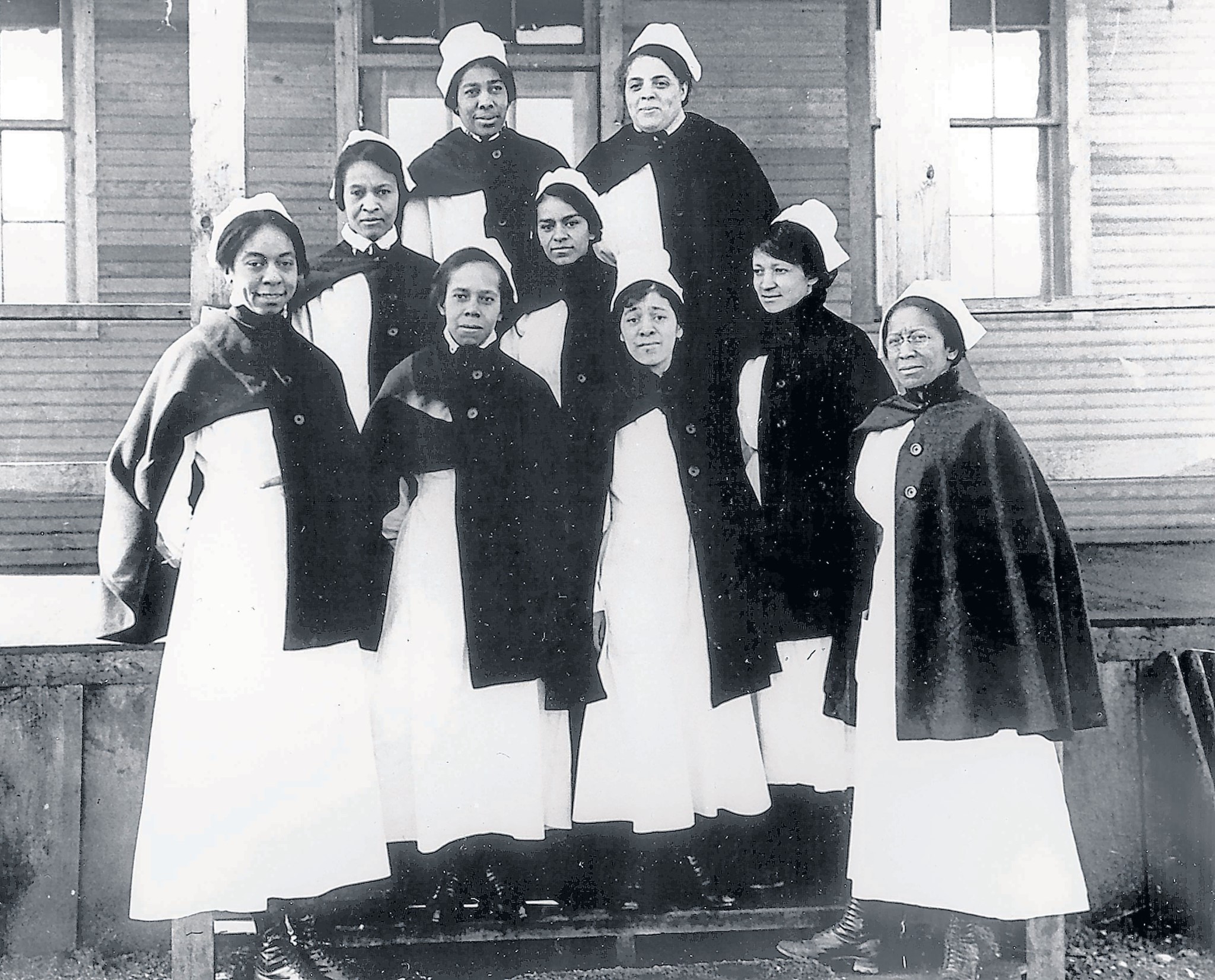|
Message from the President
February 7, 2019
 African American Nurses, Camp Sherman, 1918 African American Nurses, Camp Sherman, 1918
In recognition of Black History Month, AAHN applauds this group of African American nurses who volunteered to go to Camp Sherman, Ohio, to help in the midst of the deadly influenza pandemic of 1918.
Until the fall of 1918, when a devastating flu (H1N1) ravaged U.S. troops and civilians throughout the country, the Army Nurse Corps had refused the services of African American nurses, both at home and on the battlefront of the Great War in Europe. Finally when U.S. military camps were inundated with thousands of sick and dying soldiers and white nurses were collapsing from overwork, that policy changed. In late October, the Army sent black nurses to Camp Sherman, one of the military camps with the highest mortality rate. There the nurses cared for both black and white patients, but were assigned to segregated living quarters. Their experience with racial prejudice varied. According to African American nurse Aileen B. Cole: “ . . . We have met with individual prejudice, but generally speaking, everyone so far has been exceedingly kind.”1
Cole’s brief statement tells us little of the nurses’ reality in the camps. No doubt it was not as positive as she so professionally reported. And their stories need to be told. Hopefully, one of our members will begin that process, searching the archives for what may be hidden in plain sight.
Meanwhile, we honor these brave African American nurses, and others who were sent to Camp Grant, Illinois, or other military posts, for their service. They deserve our respect and our inclusion in nursing history.
Arlene W. Keeling, PhD, RN, FAAN
President, AAHN
1 Mary Sarnecky, A History of the U.S. Army Nurse Corps, (Philadelphia: University of Pennsylvania Press, 1999). See also: A. Keeling, “ ‘Alert to the Necessities of the Emergency’: U.S. Nursing during the 1918 Influenza Pandemic.” (Public Health Reports, 2010 Supplement 3, volume 125): 105-11.
|